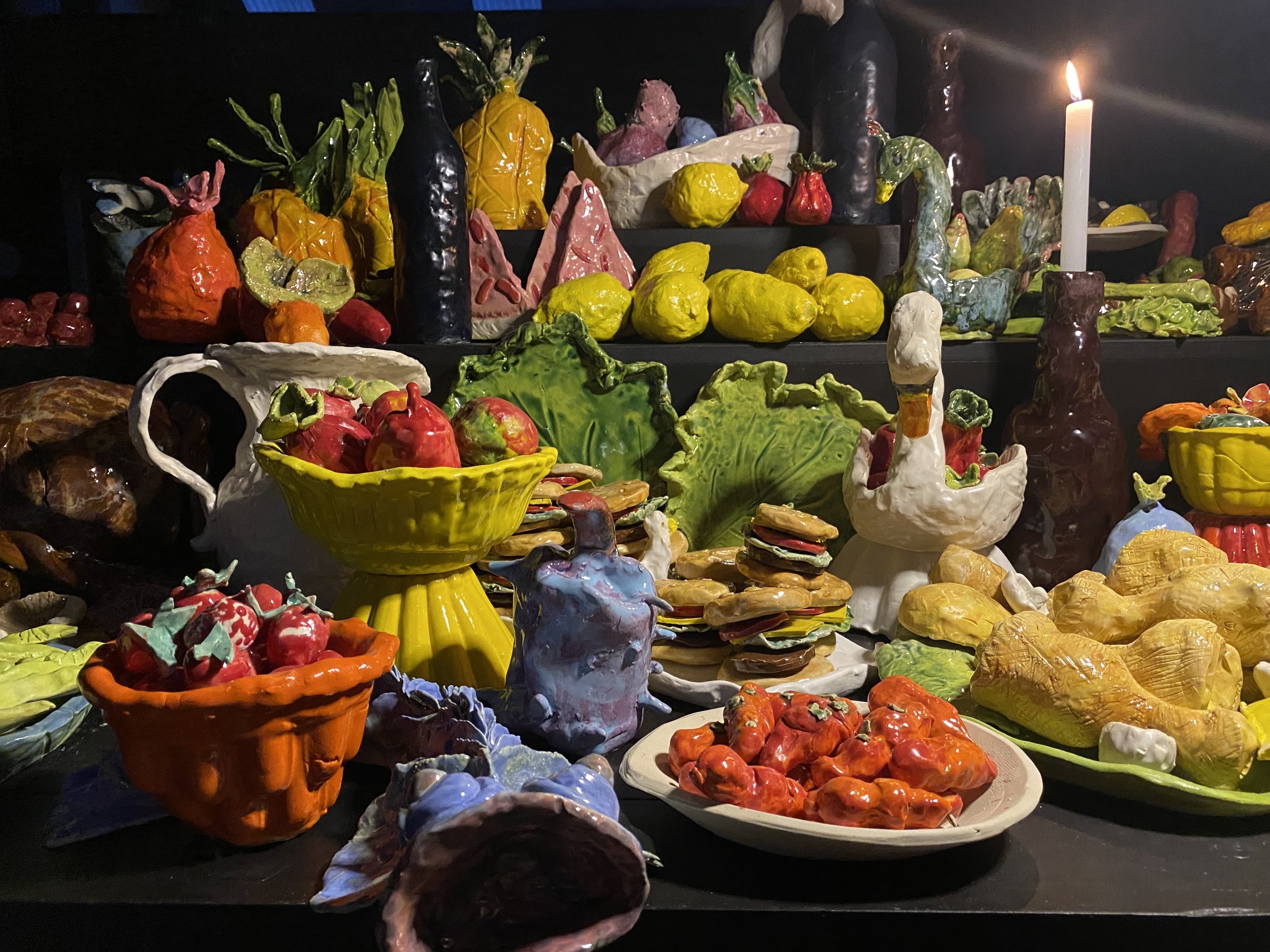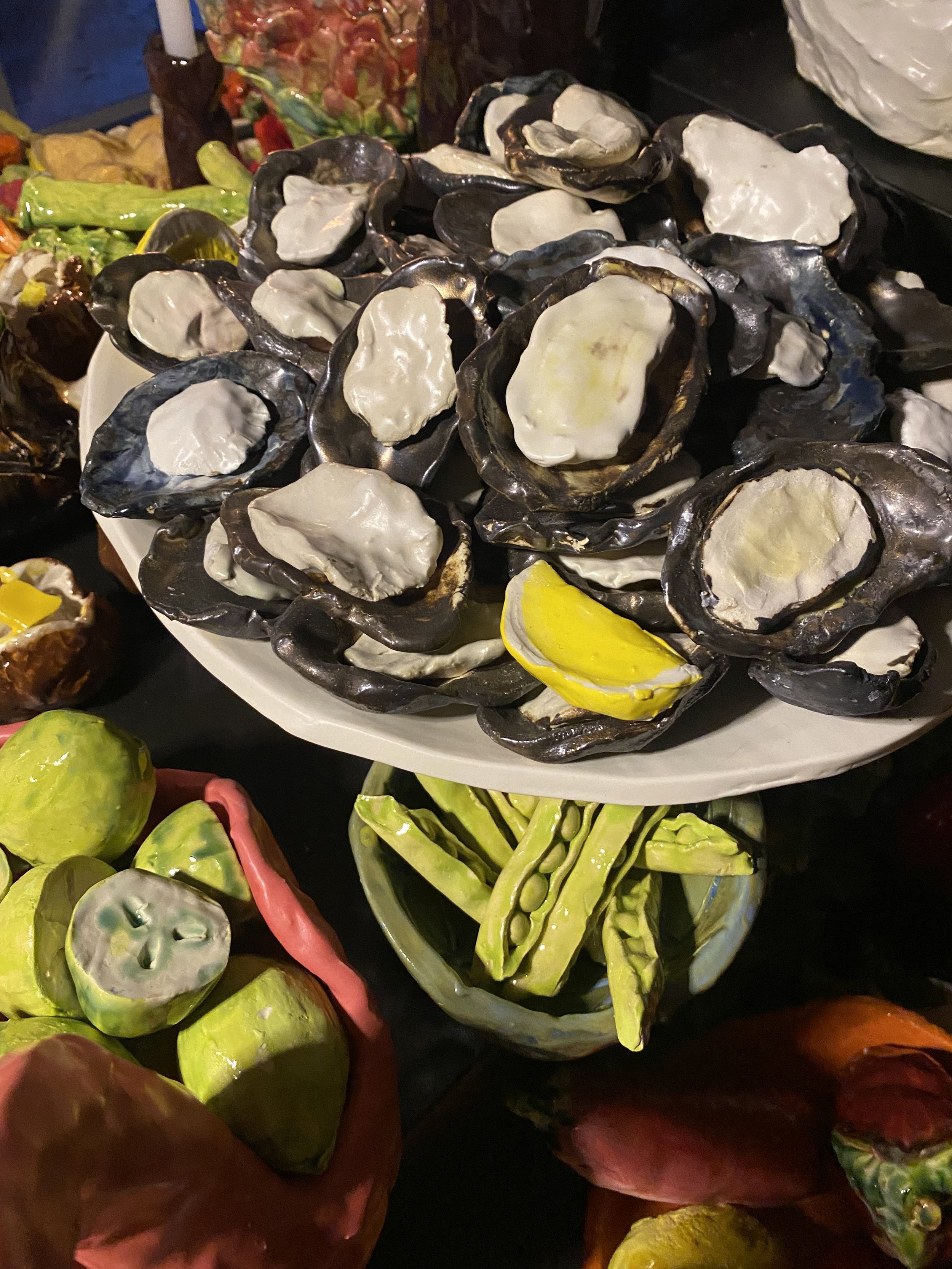The Feast
The Feast –– November 2023. Mangawhai, Aotearoa. @oops_collective
In making merry, food and art have been associated since very early times. Unearthed in 1833 and now on view in the Vatican Museum, the decorative theme of this 2nd century AD mosaic is known as asàrotos òikos, or ‘the unswept floor’. This mosaic is made from tiny pieces of glass and coloured marble and once decorated the formal dining room floor of a villa on the Aventine Hill in Rome at the time of the emperor Hadrian (117-138 AD). The imagery evokes all the licentiousness and lasciviousness of a bacchanalian feast. Picked over debris of a banquet spilt from the table and dripped from the fingers of diners, strewn carelessly across the dining room floor; fruit rinds, lobster claws, the bones of fattened fowl, fish carcass, sea urchins, and grape stems. Detritus of the most unique kind; luxuriant trash, the spoils of empire that only the Roman elite were able to lavish upon themselves and now permanently rendered in precious stone.
Asàrotos òikos mosaic / Unswept Floor mosaic, Vatican Museum.
Why would they immortalise this privilege? On one level, this mosaic simply reflected the reality of the room it was situated in, where invited guests, with wanton recklessness, would simply toss their debris on the floor because they were not the ones who had to clean it up. Yet there is another meaning to which this imagery alludes; the memento mori, or “reminder of mortality and the impermanence of life’. From this perspective, the mosaic is a graphic demonstration that even the finest of dining is an ephemeral activity – a feast transformed from luxe edibles to an aftermath of everyday garbage. The fact that although the banquet, a theatrical performance and our lives will inevitably end, one must enjoy and make the most of every meal as if it were their last.
The OOPS Collective has always found impetus in enhancing the commonplace, an attentiveness derived from close observation of the simple day-to-day rituals. In artistic terms, this verisimilitude is not likely without some degree of artifice. The ancient Chinese were the first to cotton onto the mimetic qualities of clay as a medium, admiring the ease with which clay could assume the appearance of other materials and forms. Some of the earliest Chinese ceramics routinely echoed the appearance of more highly fancied objects such as bronze vessels and sculptures. A further example is the use of celadon, a blue/green ceramic glaze that emulated the visual attributes of the rare and precious use of jade stone. Clay masquerading, in some other guise, is made more potent via its very rudimentary technology and comparatively cheap means for producing items on mass. A democratising of taste and appreciation devoid of hierarchy and status.
The principal duo behind OOPS Collective is Mandy Thomsett-Taylor and Barb Anderson. They are the salt and pepper who have seasoned this boisterous banquet alongside the great many friends and family only too willing and grateful to have given a hand in the kitchen. Artistic collaborations are de rigueur these days within the artworld – some symbolic means of disabusing the notion of artist as a disembodied individual delivering to existential angst, or some such like. Mostly, however, these collaborations come across as a little ill-fitting and disingenuous. Mandy and Barb’s shared enterprise has long been born out of mutual respect, and a genuine desire to make each other want to laugh. But like any Thelma and Louise roadie, this trip has not been without its tribulations. ‘Oops – munted again,’ a comic refrain often used to placate and diffuse the many challenges that have been meted out along the way. Mandy and Barb’s conviviality exceeds in the sharing of food, a tikanga in hospitality and generosity, ensuring everyone gets to enjoy good kai.
The Feast is a gastronomic riot, inducing your eyes to bleed cholesterol when the elevated calorie count lurches off the chart. A banquet table overly taxed in food coaxes in us the verb ‘to groan’ - an audible utterance to that transitory border between the over and under-indulged, between pleasure and pain. But there is no body shaming here, only an irrepressible solicitation to imbibe, swoon and luxuriate in a cornucopia of foodie excess. Here, there is little room to consider the etiquette, genteel or otherwise, of ceramic art, nor any notions of culinary erudition. This is more your common garden variety Alison Holst gastronomy with an overture or two of Hudson and Halls’ riff on rude food. This is the vernacular Kiwi answer to ambrosia, a raucous celebration of feasting, a tribute to life lived and an impassioned invitation to carry on making merry.
Richard Fahey
Curator/Writer
November 2023
















